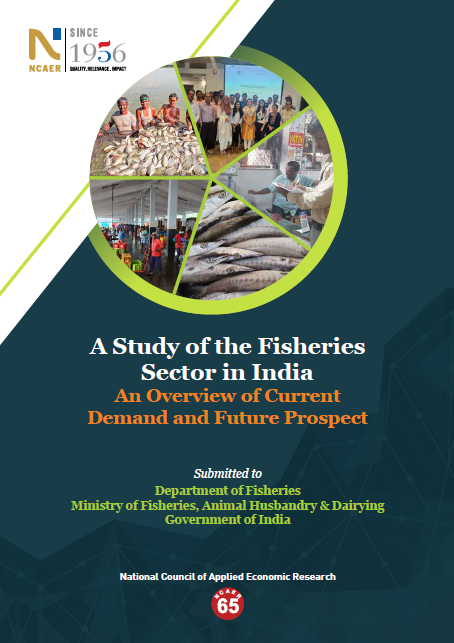A Study of the Fisheries Sector in India: An Overview of Current Demand and Future Prospect -2023
Saurabh Bandyopadhyay
Laxmi Joshi
Palash Baruah
Nijara Deka
Gurucharan Manna
Falak Naz
Gargi Pal
February 2024
India is thriving in the allied agriculture sector, with fishery, dairy, and livestock being vital livelihood support for millions. The fishery, recognized as a 'Sunrise Sector', has seen a double-digit average annual growth of over 10% in 2021-22, supporting around 28 million people, including marginalized and vulnerable communities. India is the third largest fish-producing country globally, accounting for 8% of global production and around 7% of agricultural GVA. The current NCAER study is a unique one after the NSS 68th Round and has brought out the species wise demand penetration of fish among households and in hotels and restaurants through an extensive primary survey across 24 major states of India. The consumption dynamics clearly show the length and breadth of the market, spread across categories of fish consumption. Overall, Indian households consume around 5 kg of fish per month, approximately around 60 kg per year. There is a wide variation in the consumption behaviour across states. States like Kerala, Goa, Puducherry and Karnataka consume more of marine variety, while major Indian carps have higher penetration in non-coastal states. However, the fisheries sector critically lacks a temperature-controlled supply chain, and marketing of fish & products is mostly unorganized and unregulated. The sector faces challenges such as price, accessibility, and distribution. In the Interim Budget, the Department of Fisheries has been allocated over Rs. 2.5 billion for the FY 2024-25, i.e., 15% higher than the allocation of the ongoing year with underlined emphasises on establishing digital public infrastructure for formalization to attain value-chain efficiencies. With improved infrastructure and supply chain, the fishery could become a crucial substitute for commonly used animal protein and competitive with other alternatives for nutritional security apart from imparting sustainable living and earning for a large number of downtrodden people, especially women in the post-harvest operation.
States, Sectors, Surveys, and Impact Evaluation
Sectors







